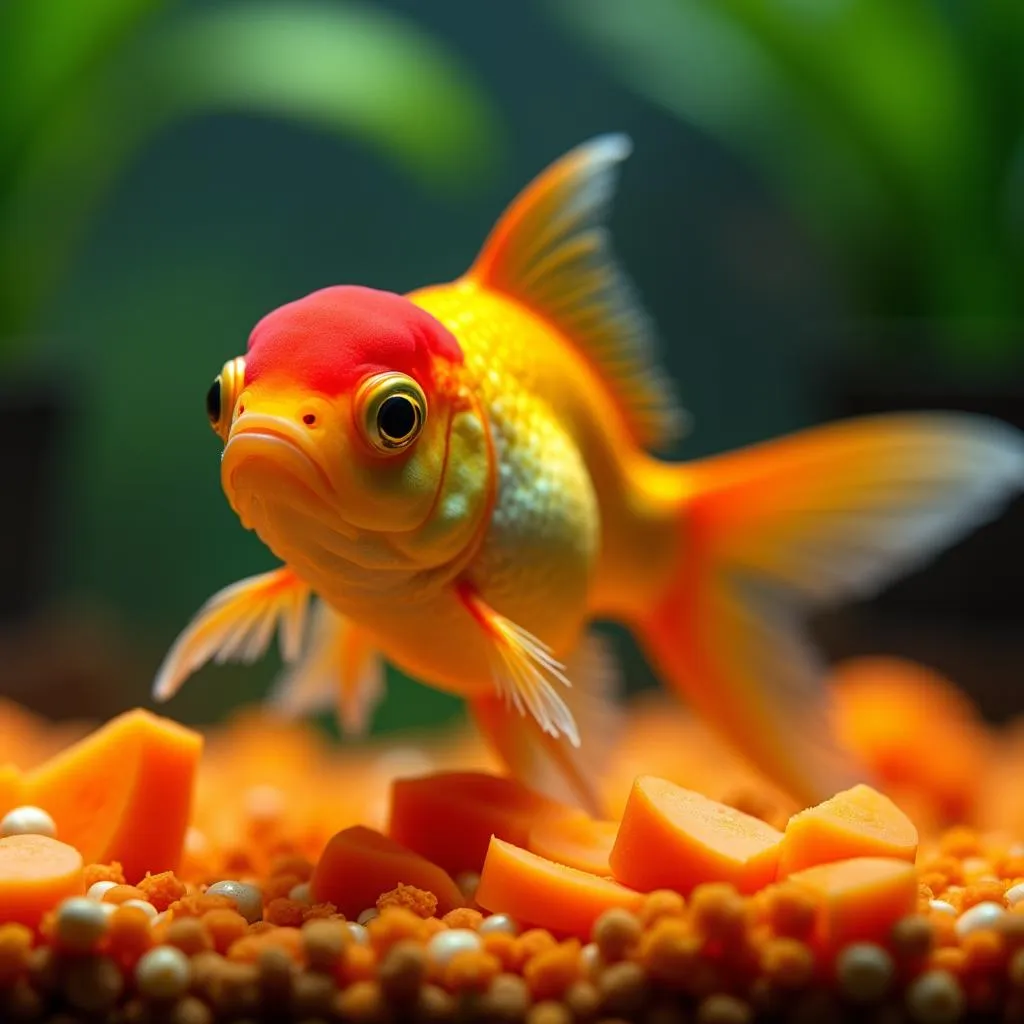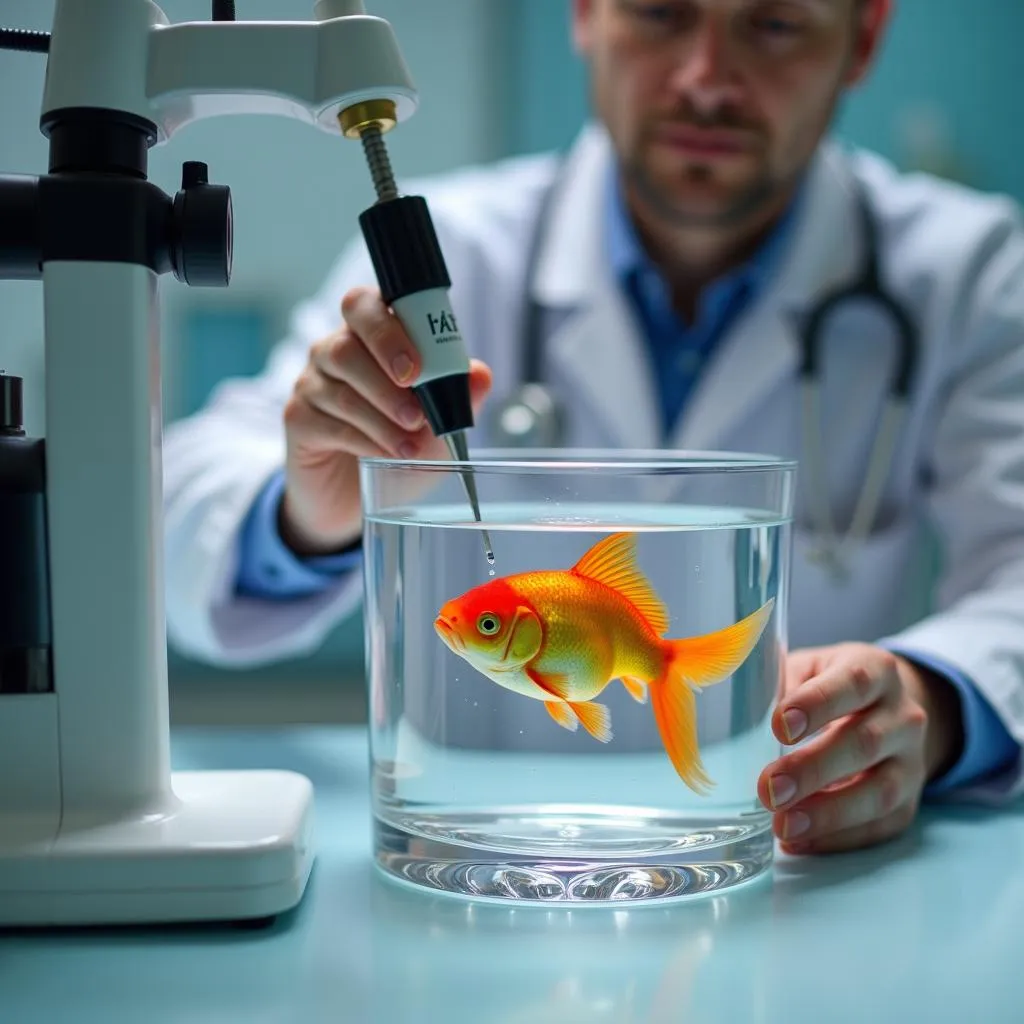Goldfish, with their shimmering scales and graceful movements, are a popular pet choice. But did you know that these fascinating creatures can sometimes undergo surprising transformations in color? It’s true! The question “can goldfish change color?” is a common one, and the answer is more nuanced than a simple yes or no.
Factors Influencing Goldfish Color Change
A goldfish’s color is determined by the pigment cells within its scales. These cells can change in response to various factors, leading to subtle or even dramatic shifts in a fish’s appearance.
Diet and Nutrition
One of the most significant factors influencing goldfish color is their diet. A diet rich in carotenoids, natural pigments found in foods like shrimp, carrots, and spirulina, can enhance a goldfish’s color vibrancy. On the other hand, a poor diet lacking essential nutrients can lead to fading or dullness in their scales.
 Goldfish eating carrots
Goldfish eating carrots
Environment and Water Conditions
The environment in which a goldfish lives also plays a crucial role in its coloration. Water parameters like temperature, pH levels, and lighting can all influence pigment production. For example, goldfish kept in low-light conditions might experience a darkening of their scales.
Genetics
Just like with humans, a goldfish’s genes play a fundamental role in determining its color. Some goldfish are genetically predisposed to have more stable coloration, while others might be prone to more significant color changes throughout their lives.
Age
As goldfish age, it’s not uncommon for their color to change slightly. This is a natural part of their life cycle, and the changes are typically gradual. Younger goldfish might have more vibrant colors, while older goldfish may develop a more muted or darker hue.
 Various goldfish with distinct colors
Various goldfish with distinct colors
Common Goldfish Color Changes
While the extent of color change can vary, here are some common transformations observed in goldfish:
- Fading: A once brightly colored goldfish might gradually fade to a paler version of its original color. This can be a sign of aging or an inadequate diet.
- Darkening: Goldfish can also darken over time, developing deeper shades of orange, red, or black. This is often linked to environmental factors or genetics.
- Black Spots: Some goldfish might develop black spots or patches on their bodies. This can be normal, especially in certain breeds, but it’s essential to rule out any underlying health issues.
Can You Control a Goldfish’s Color?
While you can’t completely control a goldfish’s color, you can influence it to some extent. Providing a nutritious diet rich in carotenoids, maintaining optimal water conditions, and ensuring adequate lighting can all contribute to vibrant and healthy coloration.
When to Be Concerned About Color Changes
While most color changes are harmless, sudden or drastic shifts in a goldfish’s appearance can sometimes signal an underlying health problem. If you notice any unusual color changes accompanied by other symptoms like lethargy, loss of appetite, or fin rot, it’s essential to consult a veterinarian experienced in fish care.
 Vet checking goldfish health
Vet checking goldfish health
Conclusion
So, can goldfish change color? The answer is a resounding yes! These captivating creatures possess the remarkable ability to transform their appearance in response to various factors. Understanding the science behind these changes allows goldfish owners to provide the best possible care for their aquatic companions, ensuring they live long, healthy, and vibrantly colored lives.

